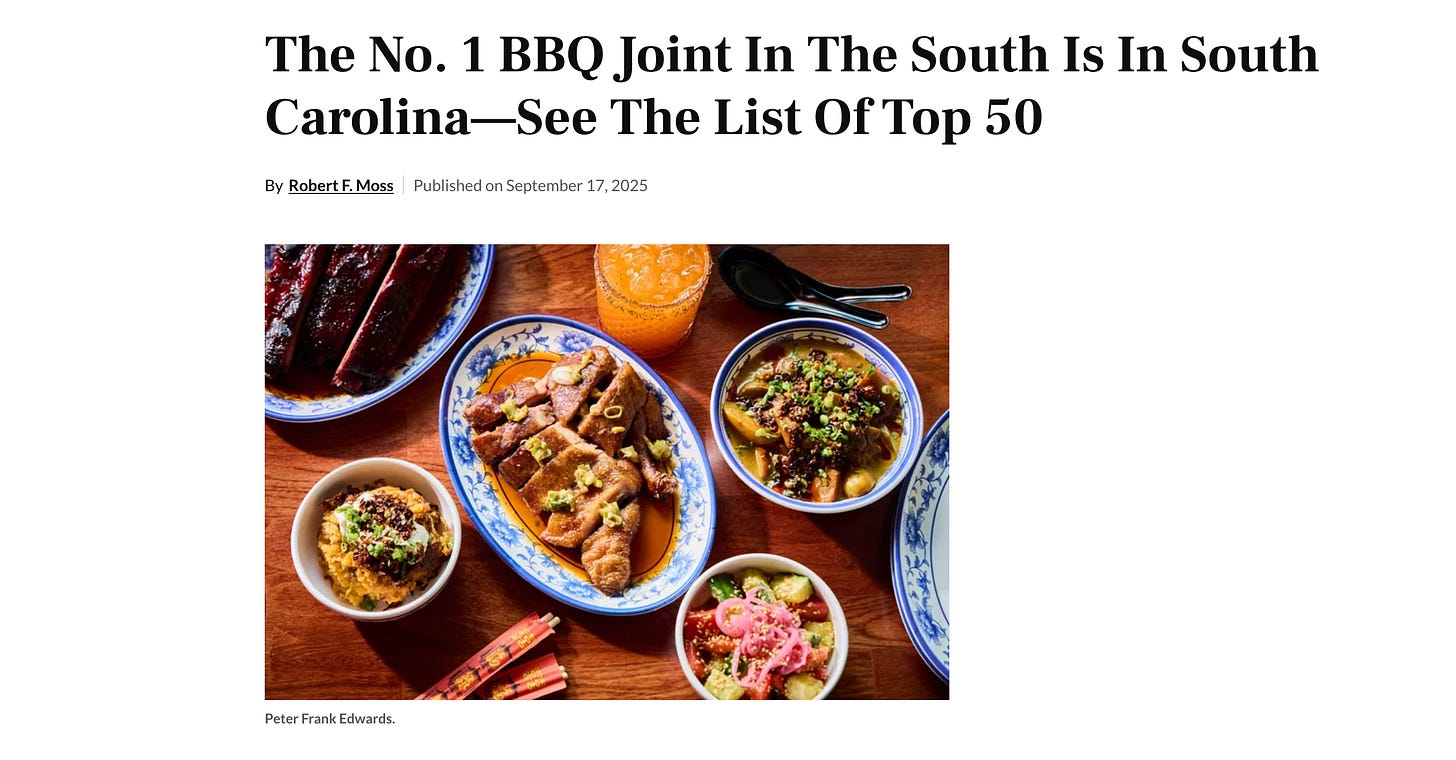The Quiet Power of a List
In barbecue, lists carry unusual weight.
At first glance, a list looks like nothing more than a piece of content. A top 50, a top 100, a top fill in the blank. A ranking. A who’s who of the moment. It’s the kind of thing we scroll through quickly, pausing to see if our favorites made the cut, shaking our heads at the omissions. But beneath the casual glance lies something far more meaningful. Lists are shorthand for cultural recognition. They are a way we distill sprawling, messy worlds into something coherent, something we can point to and say: these are the names that matter right now.
In barbecue, lists carry unusual weight. Unlike fine dining, where Michelin stars or James Beard awards are institutionalized markers of success, barbecue thrives in the informal, the familial, the passed-down. It’s backyard smoke pits, church fundraisers, and roadside stands. A “Top 50 BBQ Joints” list is not just about brisket or ribs, it is about who gets remembered in the public imagination and who is left to live only in local lore.
Lists as Cultural Maps
Lists matter because they shape maps of meaning. If you’re a traveler planning a trip through Texas, chances are you’re not scrolling through a directory of every barbecue shack on the road. You’re pulling up the “Top 50” list from Texas Monthly or Southern Living. These lists serve as unofficial guidebooks, the canon that tells newcomers: this is where the pilgrimage begins.
And for locals, these lists become mirrors of identity. If your city lands a spot, pride swells. If it’s overlooked, frustration simmers. A place like West Columbia, South Carolina, suddenly carries new weight because City Limits BBQ made it to the top of Southern Living’s list. A tiny weekend-only operation becomes a must-visit destination. Lists can put a town on the culinary map.
The Politics of Recognition
But lists don’t simply reflect reality, they shape it. They’re the product of gatekeepers, of editors and critics deciding what counts and what doesn’t. That comes with both responsibility and tension. When a list celebrates Chicago’s Sanders BBQ Supply Co. as one of America’s best, it elevates not only a restaurant but a city’s culinary reputation. Conversely, when Texas restaurants make The New York Times “Best Restaurants” list but not for barbecue, it provokes a kind of cultural dissonance: how can the state synonymous with smoked meat be recognized for everything but barbecue?
The politics of recognition extend to individuals too. An “Influential Pitmasters” list may feature legends like Aaron Franklin or Rodney Scott, but it also reveals who has been overlooked. Who gets enshrined as legacy, and who gets dismissed as a flash in the pan? Lists hold the power to canonize or to erase.
Why We Can’t Look Away
So why do we care so much? Why do these lists spark debates at the dinner table, on podcasts, and across social media? Because lists tap into a basic human desire: the need for order and recognition in a chaotic world. Barbecue, like life, is sprawling and subjective. There are endless variations, countless cooks, infinite arguments over sauce, rub, or wood choice. A list, for all its flaws, offers structure. It tells us: here is where the excellence lies. Even if we disagree, we are given something to push against, a starting point for conversation.
In that sense, lists are less about truth than about dialogue. They give us something to argue with, something to defend, something to aspire to. They don’t settle debates; they keep them alive.
The Deeper Meaning
At their best, lists honor the labor and artistry of people who might otherwise be forgotten outside their hometown. They make the invisible visible. They acknowledge the years of smoke-stained shirts, sleepless nights, and community gatherings that keep barbecue culture alive. Yes, lists are imperfect. They’re political, subjective, and sometimes unfair. But dismissing them entirely misses the point. Lists are cultural markers. They capture a moment in time, telling future generations who mattered, who cooked, and who shaped the smoky, stubborn, soulful craft of barbecue.
When we glance at a list today, we might see just names and numbers. But in truth, we’re looking at a snapshot of identity, legacy, and belonging. That’s the quiet power of a list.




